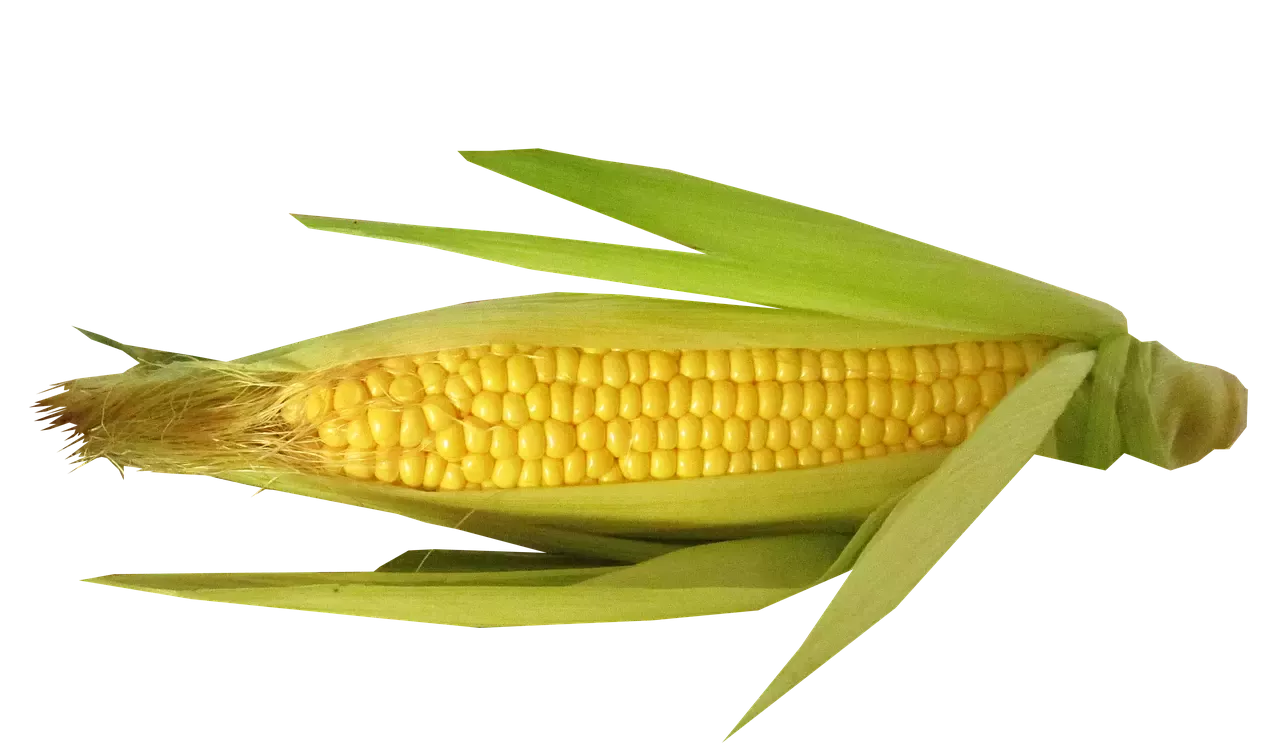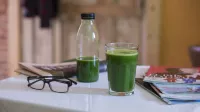The Different Types of Corn and Their Culinary Uses
Corn comes in a variety of types, each with its own unique qualities and culinary uses. Let's explore some of the most popular types of corn you can find:
1.
Sweet Corn: This is the most common type of corn found in grocery stores. It is known for its tender kernels and high sugar content, making it perfect for eating fresh or cooking in a variety of dishes.
2.
Popcorn: As the name suggests, popcorn is specifically grown for popping. It has a hard, starchy outer shell that, when heated, turns into the fluffy, delicious snack we all know and love.
3.
Flint Corn: Flint corn is characterized by its hard, colorful kernels. It is often used for grinding into cornmeal, which can be used to make tortillas, cornbread, and other baked goods.
4.
Dent Corn: Dent corn, also known as field corn, is primarily grown for animal feed. However, it can also be used to make cornmeal and corn syrup.
Each type of corn has its own unique flavor profile and texture, so it's worth experimenting with different varieties to discover your personal preference.
Selecting the Best Corn for Cooking
When it comes to cooking corn, selecting the freshest ears is crucial for optimal taste and texture. Here are some tips to help you choose the best corn:
1.
Look for fresh, green husks: The husks should be tightly wrapped around the ear of corn and have a vibrant green color. Avoid ears with brown or yellow husks, as this could indicate that the corn is past its prime.
2.
Feel for plump kernels: Gently squeeze the ear of corn through the husk to feel for plump, well-formed kernels. Avoid ears with shriveled or dented kernels, as these may be less flavorful.
3.
Inspect the silk: The silk should be slightly moist and tassel-like in appearance. Avoid ears with dry or blackened silk, as this could be a sign of overripe corn.
By following these guidelines, you can ensure that you're starting with the freshest, most flavorful corn for your culinary creations.
Preparing Corn for Cooking
Before you start cooking your corn, it's important to properly prepare it. Here's a step-by-step guide on how to prepare corn for cooking:
1.
Remove the husks: Start by peeling back the husks from the top of the ear down to the base. Once the husks are peeled back, use a firm grip to snap off the stem at the base of the ear.
2.
Remove the silk: Gently pull away the silk from the ear of corn, making sure to remove all traces of it. You can use a soft brush or your fingers to help remove any stubborn silk strands.
3.
Rinse the corn: Give the corn a quick rinse under cold water to remove any remaining dirt or debris. Pat the corn dry with a clean towel before proceeding with your chosen cooking method.
Properly preparing the corn ensures that you're starting with a clean canvas for your culinary masterpiece.
Boiling Corn on the Cob
Boiling is one of the most common methods for cooking corn on the cob, as it's quick and easy. Here's how to boil corn on the cob to perfection:
1.
Bring a pot of water to a boil: Fill a large pot with enough water to fully submerge the ears of corn. Bring the water to a rolling boil over high heat.
2.
Add salt and sugar (optional): For added flavor, you can add a tablespoon of salt and a tablespoon of sugar to the boiling water. This step is optional but can enhance the natural sweetness of the corn.
3.
Add the corn: Carefully place the prepared ears of corn into the boiling water. Make sure the water covers the corn completely.
4.
Boil for 4-6 minutes: Cook the corn for 4-6 minutes, or until the kernels are tender when pierced with a fork. Be careful not to overcook the corn, as it can become mushy.
5.
Remove and serve: Using tongs, carefully remove the cooked corn from the boiling water. Allow the excess water to drain off before serving.
Boiling corn on the cob is a simple yet effective way to bring out its natural sweetness and tenderness.
Grilling Corn on the Cob
Grilling corn on the cob adds a smoky, charred flavor that takes this classic summer staple to a whole new level. Follow these steps to grill corn on the cob:
1.
Preheat the grill: Preheat your grill to medium-high heat. If using a charcoal grill, wait until the coals are ashed over and glowing.
2.
Prepare the corn: Brush each ear of corn with melted butter or olive oil, and season with salt and pepper or your favorite spices. This will help prevent sticking and add flavor to the corn.
3.
Grill the corn: Place the prepared corn directly on the grill grates. Cook for about 10-15 minutes, turning occasionally, until the kernels are tender and slightly charred.
4.
Remove and serve: Carefully remove the grilled corn from the grill using tongs. Allow it to cool slightly before serving.
Grilling corn on the cob gives it a delicious smoky flavor and a beautiful charred appearance that will impress your guests.
Roasting Corn on the Cob
Roasting corn on the cob in the oven is a great option when grilling is not possible. It concentrates the flavors and brings out the natural sweetness of the corn. Here's how to roast corn on the cob:
1.
Preheat the oven: Preheat your oven to 400°F (200°C). Line a baking sheet with aluminum foil for easy cleanup.
2.
Prepare the corn: Brush each ear of corn with melted butter or olive oil, and season with salt and pepper or your favorite spices.
3.
Roast the corn: Place the prepared corn on the baking sheet and transfer it to the preheated oven. Roast for 20-25 minutes, turning the corn halfway through, until the kernels are tender and slightly caramelized.
4.
Remove and serve: Carefully remove the roasted corn from the oven using oven mitts or tongs. Allow it to cool slightly before serving.
Roasting corn on the cob gives it a rich, caramelized flavor and a slightly crispy texture that will have everyone coming back for seconds.
Steaming Corn
Steaming corn is a gentle and healthy cooking method that preserves its natural flavors and nutrients. Follow these steps to steam corn on the cob:
1.
Prepare the steamer: Fill a pot with enough water to reach just below the steamer basket. Bring the water to a boil over high heat.
2.
Add the corn: Place the prepared ears of corn in the steamer basket, making sure they don't touch the water.
3.
Steam for 5-7 minutes: Cover the pot with a lid and steam the corn for 5-7 minutes, or until the kernels are tender when pierced with a fork.
4.
Remove and serve: Using tongs or oven mitts, carefully remove the steamed corn from the pot. Allow it to cool slightly before serving.
Steaming corn on the cob is a healthy and easy way to enjoy its natural sweetness and crisp texture.
Other Creative Ways to Cook Corn
While boiling, grilling, roasting, and steaming are the most common methods for cooking corn, there are plenty of other creative ways to enjoy this versatile ingredient. Here are a few ideas to inspire your culinary adventures:
-
Corn Chowder: Make a comforting and creamy corn chowder by combining sautéed onions, potatoes, corn kernels, and broth. Finish with a touch of cream and fresh herbs for a delicious soup that will warm your soul.
-
Corn Salsa: Whip up a refreshing corn salsa by combining grilled corn kernels, diced tomatoes, red onions, jalapeños, lime juice, and cilantro. Serve with tortilla chips for a zesty appetizer or topping for grilled meats.
-
Corn Fritters: Mix corn kernels with a simple batter made of flour, eggs, and milk, then fry until golden brown. These crispy corn fritters make a tasty side dish or snack.
-
Cornbread: Use cornmeal made from ground flint corn to make homemade cornbread. Serve it warm with butter and honey for a comforting treat.
These are just a few examples of the many creative ways you can incorporate corn into your cooking. Let your imagination run wild and experiment with different flavors and techniques to discover new corn-inspired dishes.
Delicious Corn-Based Recipes
Now that you've mastered the art of cooking corn, it's time to put your skills to the test with some delicious corn-based recipes. Here are a few mouthwatering ideas to get you started:
1.
Grilled Mexican Street Corn: Brush grilled corn on the cob with a mixture of mayonnaise, lime juice, chili powder, and crumbled cotija cheese. Sprinkle with chopped cilantro and serve with lime wedges for a flavor-packed side dish.
2.
Creamy Corn and Bacon Pasta: Cook your favorite pasta according to the package instructions. In a separate pan, sauté bacon until crispy, then add corn kernels and cook until tender. Toss the cooked pasta with the corn and bacon mixture, along with some heavy cream, grated Parmesan cheese, and chopped fresh herbs.
3.
Corn and Avocado Salad: Combine grilled corn kernels, diced avocado, cherry tomatoes, red onion, and fresh basil in a bowl. Dress with a simple vinaigrette made of olive oil, white wine vinegar, Dijon mustard, salt, and pepper. Toss gently and serve as a refreshing side salad.
These recipes are just a taste of the endless possibilities when it comes to cooking with corn. Experiment with different ingredients and flavors to create your own signature corn dishes.
Tips for Serving and Garnishing Corn Dishes
When it comes to serving and garnishing corn dishes, a few simple tips can elevate the presentation and enhance the flavors. Here are some ideas to inspire you:
1.
Add a pat of flavored butter: Jazz up your cooked corn by adding a pat of flavored butter, such as garlic butter, herb butter, or chili-lime butter. The melted butter will enhance the natural sweetness of the corn and add a burst of flavor.
2.
Sprinkle with fresh herbs: Finely chopped fresh herbs, such as parsley, cilantro, or chives, can add a pop of color and freshness to your corn dishes. Sprinkle them over your cooked corn just before serving.
3.
Serve with dipping sauces: Offer a variety of dipping sauces alongside your corn dishes for an interactive dining experience. Some popular options include chipotle mayo, spicy aioli, or tangy barbecue sauce.
4.
Top with cheese: Grated cheese, such as Parmesan, cheddar, or feta, can take your corn dishes to the next level. Sprinkle some cheese over your cooked corn and let it melt for a creamy and indulgent treat.
By paying attention to the little details, you can transform a simple corn dish into a gourmet experience.
Conclusion
Congratulations! You've now mastered the art of corn cuisine. Armed with the knowledge and techniques shared in this guide, you can confidently cook corn in a variety of ways, from boiling and grilling to roasting and steaming. Whether you're enjoying a classic ear of corn on the cob or exploring creative corn-based recipes, you can be sure that your corn dishes will be perfectly cooked and bursting with flavor.
So go ahead, embrace the versatility of corn and let your culinary creativity shine. With our foolproof methods and tantalizing recipes, you're well on your way to becoming a corn connoisseur. So grab your apron, head to the kitchen, and get ready to savor the taste of summer with our corn-cooking expertise!
Happy cooking!

 Unveiling the Must-Have Blenders of 2023
Unveiling the Must-Have Blenders of 2023 10 Delicious Recipes That Use Beer as a Secret Ingredient
10 Delicious Recipes That Use Beer as a Secret Ingredient



